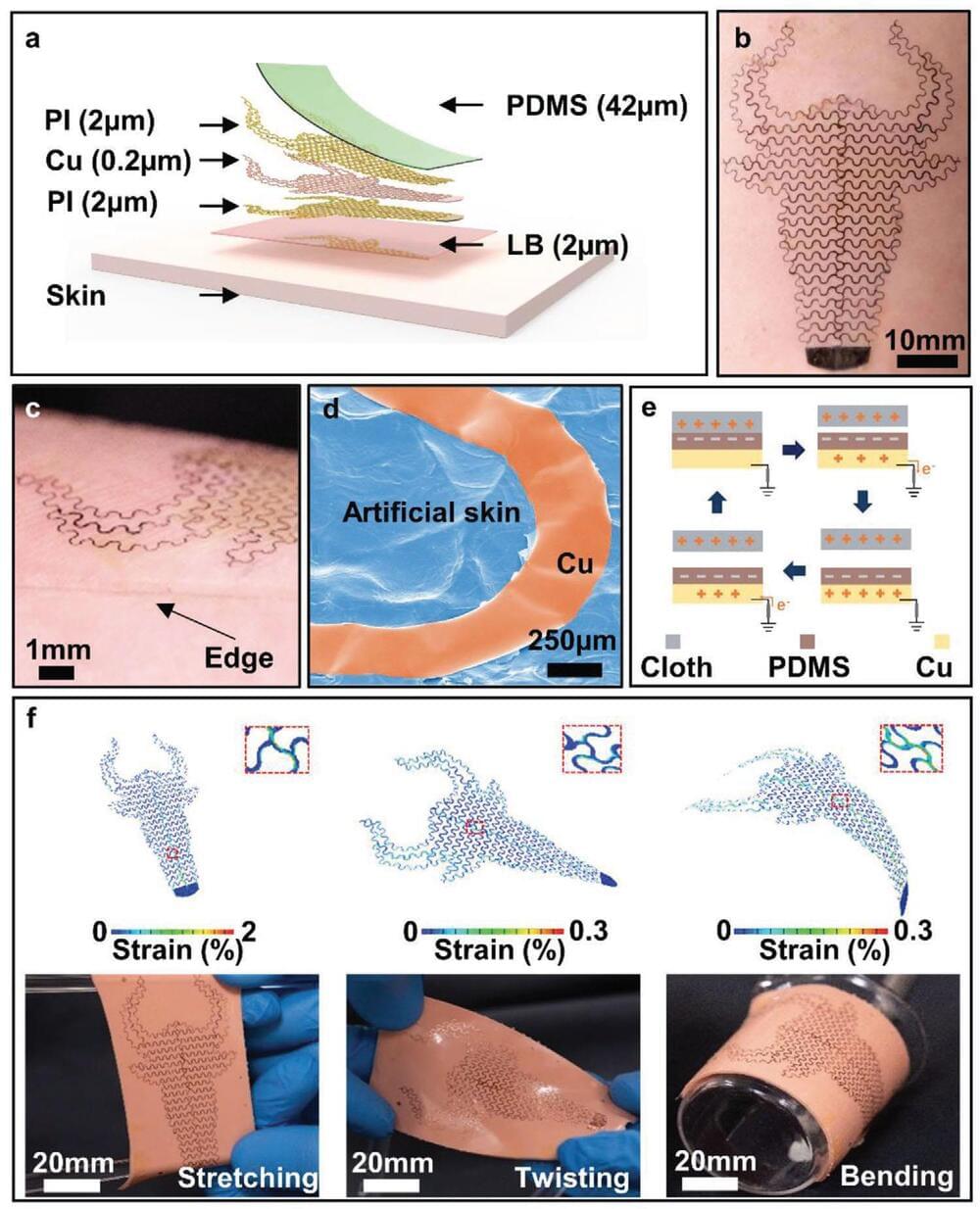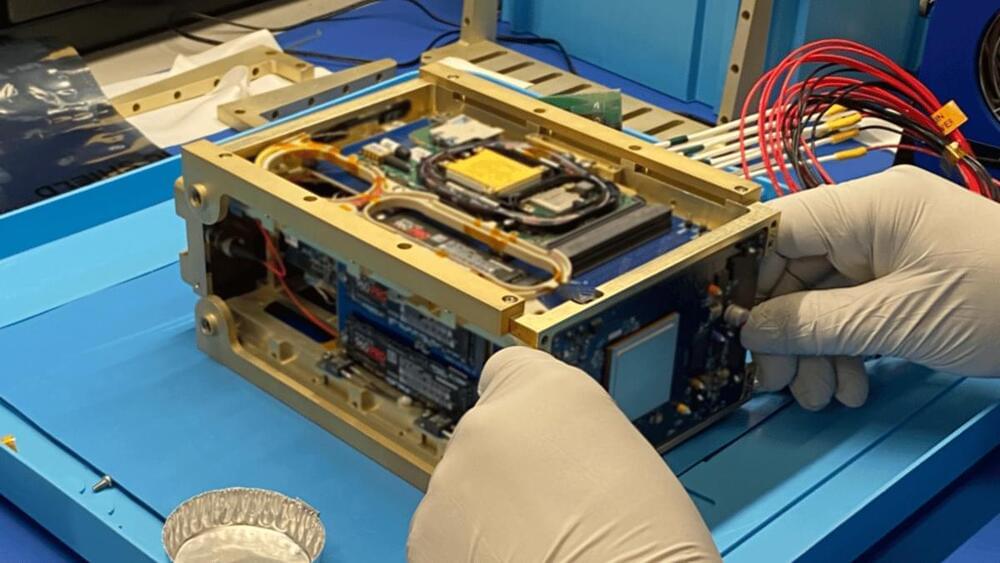Archive for the ‘internet’ category: Page 93
Dec 4, 2022
Worldwide Connectivity for Almost Every Person on the Planet is Getting Close
Posted by 21st Century Tech Blog in category: internet
Internet connectivity is charging ahead with 900,000 gaining access daily. By 2032, 8 billion will be online. What are the implications?
Satellite Internet connectivity, faster feeds and speeds, and accessibility will transform our society over the next decade.
Dec 3, 2022
Electronic nanogenerator tattoos as human-machine interfaces
Posted by Quinn Sena in categories: cyborgs, energy, health, internet, nanotechnology, wearables
The field of epidermal electronics, or e-tattoos, covers a wide range of flexible and stretchable monitoring gadgets that are wearable directly on the skin. We have covered this area in multiple Nanowerk Spotlights, for instance stick-on epidermal electronics tattoo to measure UV exposure or tattoo-type biosensors based on graphene; and we also have posted a primer on electronic skin.
Taking the concept of e-tattoos a step further, integrating them with triboelectric nanogenerators (TENGs), for instance for health monitoring, could lead to next generation wearable nanogenerators and Internet-of-things devices worn directly on and powered by the skin.
In work reported in Advanced Functional Materials (“Triboelectric Nanogenerator Tattoos Enabled by Epidermal Electronic Technologies”), researchers report a tattoo-like TENG (TL-TENG) design with a thickness of tens of micrometers, that can interface with skin without additional adhesive layers, and be used for energy harvesting from daily activities.
Dec 3, 2022
Google shuts down Duplex on the Web, its attempt to bring AI smarts to retail sites and more
Posted by Gemechu Taye in categories: cybercrime/malcode, food, internet, robotics/AI
Google is shutting down Duplex on the Web, its AI-powered set of services that navigated sites to simplify the process of ordering food, purchasing movie tickets and more. According to a note on a Google support page, Google on the Web and any automation features enabled by it will no longer be supported as of this month.
“As we continue to improve the Duplex experience, we’re responding to the feedback we’ve heard from users and developers about how to make it even better,” a Google spokesperson told TechCrunch via email, adding that Duplex on the Web partners have been notified to help them prepare for the shutdown. “By the end of this year, we’ll turn down Duplex on the Web and fully focus on making AI advancements to the Duplex voice technology that helps people most every day.”
Google introduced Duplex on the Web, an outgrowth of its call-automating Duplex technology, during its 2019 Google I/O developer conference. To start, it was focused on a couple of narrow use cases, including opening a movie theater chain’s website to fill out all of the necessary information on a user’s behalf — pausing to prompt for choices like seats. But Duplex on the Web later expanded to passwords, helping users automatically change passwords exposed in a data breach, as well as assist with checkout for e-commerce retailers, flight check-in for airline sites and automatic discount finding.
Dec 3, 2022
New quantum light source paves the way to a quantum internet
Posted by Shubham Ghosh Roy in categories: computing, internet, nanotechnology, particle physics, quantum physics
Conventional light sources for fiber-optic telecommunications emit many photons at the same time. Photons are particles of light that move as waves. In today s telecommunication networks, information is transmitted by modulating the properties of light waves traveling in optical fibers, similar to how radio waves are modulated in AM and FM channels.
In quantum communication, however, information is encoded in the phase of a single photon – the photon s position in the wave in which it travels. This makes it possible to connect quantum sensors in a network spanning great distances and to connect quantum computers together.
Researchers recently produced single-photon sources with operating wavelengths compatible with existing fiber communication networks. They did so by placing molybdenum ditelluride semiconductor layers just atoms thick on top of an array of nano-size pillars (Nature Communications, “Site-Controlled Telecom-Wavelength Single-Photon Emitters in Atomically-thin MoTe 2 ”).
Dec 2, 2022
FCC gives permission to SpaceX to launch up to 7,500 Starlink internet satellites
Posted by Gemechu Taye in categories: Elon Musk, internet, satellites
The Federal Communications Commission issued a key authorization to Elon Musk’s SpaceX on Thursday to launch up to 7,500 next-generation satellites in its Starlink internet network.
“Specifically, we grant SpaceX authority to construct, deploy, and operate up to 7,500 satellites operating at altitudes of 525,530, and 535 km and inclinations of 53, 43, and 33 degrees, respectively, using frequencies in the Ku-and Ka-band. We defer consideration of SpaceX’s proposed use of E-band frequencies and tracking beacons,” said the order.
Dec 2, 2022
Laser satellite shatters space-to-Earth data transmission speed record
Posted by Genevieve Klien in categories: computing, internet, satellites
A small satellite developed by MIT engineers has set a new record for data transmission between a satellite and Earth. The TeraByte InfraRed Delivery (TBIRD) system used a laser to beam huge amounts of data at up to 100 gigabits per second (Gbps).
This data transmission speed is far greater than most connections you’ll get between the sky and the ground. SpaceX’s Starlink satellite internet offers up to 500 Mbps to Premium customers, and even the International Space Station’s data transmission tops out around 600 Mbps. That makes TBIRD up to 200 times faster.
The key difference is that most satellites communicate with ground stations via radio waves. TBIRD, on the other hand, uses laser light, which can carry up to 1,000 times more data in each transmission. Lasers come with their own hurdles though – the beams are much narrower, requiring more precise alignment between transmitter and receiver. And the light can be distorted by the atmosphere, leading to data loss. So TBIRD was designed to overcome these issues.
Dec 1, 2022
Communications system achieves fastest laser link from space yet
Posted by Shubham Ghosh Roy in categories: computing, internet, space
In May 2022, the TeraByte InfraRed Delivery (TBIRD) payload onboard a small CubeSat satellite was launched into orbit 300 miles above Earth’s surface. Since then, TBIRD has delivered terabytes of data at record-breaking rates of up to 100 gigabits per second—100 times faster than the fastest internet speeds in most cities—via an optical communication link to a ground-based receiver in California.
This data rate is more than 1,000 times higher than that of the radio-frequency links traditionally used for satellite communication and the highest ever achieved by a laser link from space to ground. And these record-setting speeds were all made possible by a communications payload roughly the size of a tissue box.
MIT Lincoln Laboratory conceptualized the TBIRD mission in 2014 as a means of providing unprecedented capability to science missions at low cost. Science instruments in space today routinely generate more data than can be returned to Earth over typical space-to-ground communications links. With small, low-cost space and ground terminals, TBIRD can enable scientists from around the world to fully take advantage of laser communications to downlink all the data they could ever dream of.
Nov 29, 2022
New Measurements Provide a Glimpse of the Quantum Future
Posted by Paul Battista in categories: computing, internet, quantum physics
A multi-institutional team has created an efficient method for measuring high-dimensional qudits encoded in quantum frequency combs, a kind of photon source, on a single optical chip using already available experimental and computational resources.
Despite the fact that the word “qudit” may appear to be a typo, this less well-known relative of the qubit, or quantum bit, has the ability to carry more data and is more noise-resistant, two crucial characteristics required to enhance the performance of quantum networks, quantum key distribution systems, and eventually the quantum internet.
In contrast to traditional computer bits, which classify data as ones or zeros, qubits can hold values of one, zero, or both. This is due to superposition, a phenomenon that enables several quantum states to exist simultaneously. Qudit’s “d” refers to the variety of levels or values that may be encoded on a photon. Traditional qubits only have two levels, but by adding more levels, they become qudits.
Nov 29, 2022
A Diamond “Blanket” Can Cool the Transistors Needed for 6G
Posted by Shubham Ghosh Roy in categories: computing, internet, physics
“Thermal issues are currently one of the biggest bottlenecks that are plaguing any kind of microelectronics,” says team lead Srabanti Chowdhury, professor of electrical engineering at Stanford University. “We asked ourselves, ‘Can we perform device cooling at the very material level without paying a penalty in electrical performance?’”
Indeed, they could. The engineers grew a heat-wicking diamond layer right on top of individual transistors—their hottest points—as well as on their sides. Heat flowed through the diamond to a heat sink on the back of the device. With this technique, the researchers achieved temperatures 100 degrees Celsius lower without any degradation of the device’s electrical properties. They will report their findings in San Francisco at the IEEE International Electron Device Meeting in December.
They demonstrated their technique on gallium nitride (GaN) high-electron-mobility transistors, or HEMTs. GaN is the go-to alternative to silicon for high-frequency applications, as it can sustain higher electric fields and responds more quickly to electric field changes. GaN also breaks down at a higher temperature than silicon. But not high enough: “If you go by the physics of the material, you see what its potential is, and we’re nowhere close to that today,” says Chowdhury. Keeping GaN HEMTs cool as devices shrink and frequencies grow will allow them to live up to their physics-promised potential.

















